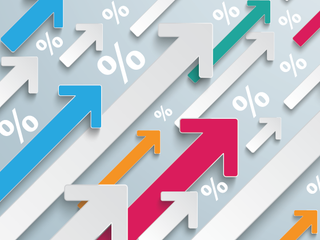Summary
Hardship programs are designed to help consumers get through a tough financial time without defaulting on their credit card payments. Here’s how they work, how you can qualify and what other options are available.
The content on this page is accurate as of the posting date; however, some of our partner offers may have expired. Please review our list of best credit cards, or use our CardMatch™ tool to find cards matched to your needs.
If you’re out of work due to a health issue, sidelined because of an accident, facing a mountain of medical bills, impacted by a natural disaster or struggling financially because of a divorce, a credit card hardship program might offer you some relief in paying your bill.
“There are a lot of things that can make it difficult to pay your bills,” says Mike Sullivan, a personal financial consultant with the nonprofit consumer credit counseling agency, Take Charge America. “A hardship plan can be very, very helpful to consumers.”
While you may never have heard of such a program, Sullivan explains that most credit card issuers are very familiar with them and regularly provide them to cardholders under the right circumstances.
So what is a credit card hardship program, and how does it work?
What is a credit card hardship program?
Credit card hardship programs are designed to help consumers through periods of financial instability without defaulting on their credit cards.
Some credit card companies charge late fees up to $40, while the average credit card interest rate is currently just above 16%.
“That can be very discouraging,” Sullivan says. “How do you ever catch up?”
That’s where a credit card hardship program can come in.
The programs can vary from issuer to issuer, and from consumer to consumer, says Melinda Opperman, president of Credit.org, a nonprofit consumer credit counseling agency.
Under such programs, interest charges may be temporarily reduced or eliminated, payments may be reduced, late fees may be waived and payment due dates may be extended. These changes can end up saving you thousands of dollars in interest and fees.
Given the differences in issuer programs, it’s important to get all your terms in writing. That way, you can refer to them as you navigate your financial difficulties and avoid inadvertently getting into more financial trouble because of a misunderstanding.
How can you qualify?
You can contact your credit card issuer directly and ask about its hardship program, or you can turn to a nonprofit consumer credit counseling program for assistance, Sullivan says. “But not everyone gets one just by virtue of asking.”
While anyone can request to take part in a hardship program, according to Sullivan, credit card issuers may be more likely to grant the request to someone who has a solid credit history.
While many major card issuers offered relief to cardholders during the COVID-19 pandemic and streamlined their assistance programs to make it easier to participate, most of these programs have been scaled down.
What else should you keep in mind?
Since each card issuer is different, it’s important to make sure you understand the terms of your arrangement and get them in writing. Here are some things to keep in mind:
- Hardship programs typically last for no more than 12 months. Use the time to establish a plan for how to meet your bills after the program ends.
- Your account may be frozen, meaning you won’t be able to make new purchases with the card.
- Your issuer might continue to charge interest while you are part of the hardship program, so the balance on your card may keep increasing.
- You need to be sure you can meet the modified payment amount. If your new payment is $100 per month, be sure you have that much money available to pay the bill each month, Sullivan says.
- Your issuer might require you to set up automatic payments from your bank account so the credit card issuer knows it will be paid.
- It can be problematic to ask for a hardship plan from one creditor, only to continue using credit cards from other issuers.
What other options are there?
If you still have concerns about your financial situation, contact a nonprofit consumer credit counseling agency. These organizations can assist in prioritizing expenses and help you determine if there are areas where you might be able to cut expenses, at least temporarily, such as gym memberships and cable bills.
Borrowers also shouldn’t hesitate to seek out other sources of assistance, Opperman says, such as special unemployment or other benefits from government programs. She also recommends contacting a nonprofit consumer credit counseling organization sooner rather than later. “Especially during a crisis, waiting too long to seek outside help just makes it harder for the consumer to get through the situation,” Opperman says.
Bottom line
Financial hardship can happen when you least expect it. Whether it’s due to an accident, a dramatic change in personal circumstances or a global pandemic, if you need some breathing room from credit card bills, reach out to your credit card issuers and ask about their hardship programs.
Keep in mind that your odds of acceptance may depend on your current standing, so ask for help sooner rather than later – don’t wait until you’ve fallen behind on payments and damaged your relationship with your issuer.
Editorial Disclaimer
The editorial content on this page is based solely on the objective assessment of our writers and is not driven by advertising dollars. It has not been provided or commissioned by the credit card issuers. However, we may receive compensation when you click on links to products from our partners.




